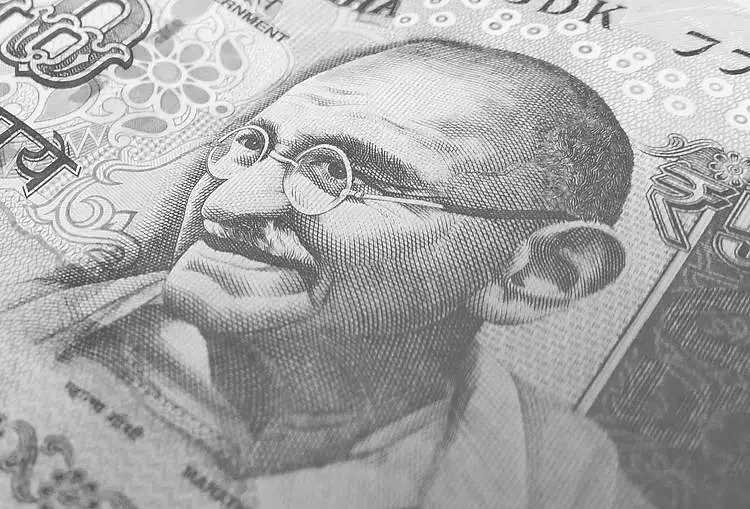The Indian Rupee (INR) has recently exhibited a downward trend against the backdrop of significant economic fluctuations, particularly during Asian trading sessions. The complex interplay of domestic stock market movements and global commodity prices has created a challenging environment for the INR, raising questions about its future stability and overall performance. This article delves into the various factors influencing the Indian Rupee, including foreign investment trends, central bank policies, and macroeconomic indicators, culminating in a comprehensive understanding of its current state.
A noticeable drop in foreign portfolio investments has significantly impacted the INR. More than $1.5 billion has exited Indian equities in November alone, compounding previous outflows of approximately $11 billion in October. Such a mass withdrawal signals potential concerns among foreign investors regarding the Indian economic outlook, casting a shadow over market confidence. The sell-off has intensified amid rising global crude oil prices, placing additional pressure on the INR. India, as a major oil importer, is particularly sensitive to fluctuations in oil prices since they directly impact trade balances and inflation.
With Brent crude breaching significant price levels, market participants are wary of how these increases could further deteriorate the Indian economy. Higher oil prices translate to inflated import bills, thereby pushing the current account deficit wider and increasing the demand for foreign currency to settle these payments. The resultant depreciation of the INR creates a volatile environment that complicates economic planning and investment decisions.
The recent decisions by the Federal Open Market Committee (FOMC), which included a 25 basis point reduction in the overnight borrowing rate to a target range of 4.50%-4.75%, have further complicated the financial landscape. The rhetoric from Fed Chair Jerome Powell underscores an ongoing effort to navigate a tightening monetary environment while balancing the need for economic stimulus. As international investors recalibrate their strategies in response to potential interest rate cuts, the implications for emerging markets including India become pronounced.
The probability of a quarter-point interest rate reduction by the Federal Reserve has increased to over 68%. Such expectations have a direct correlation with capital flows toward developed economies, which could detract from investments in riskier assets like those in India. Consequently, the Rupee’s performance is susceptible to shifts in sentiment resulting from monetary policy changes abroad, particularly from the United States.
Market Indicators: The Technical Perspective
Technical analysis provides further insight into the INR’s trajectory. As of now, the USD/INR currency pair resides within a bullish trend as it remains above the crucial 100-day Exponential Moving Average (EMA). However, the 14-day Relative Strength Index (RSI) hovering around 75 indicates that the Rupee may be entering overbought territory. This context suggests that consolidation could be imminent before any potential advances toward significant resistance levels, notably at 84.30 and beyond.
On the downside, intersecting support levels at 83.82 and 83.46 indicate critical thresholds that could exacerbate selling pressure should the market experience further volatility. Traders and investors should closely monitor these levels to anticipate possible shifts in sentiment and trading strategies.
The Indian Rupee is keenly responsive to a diverse range of macroeconomic factors. Notably, inflation rates, economic growth indicators, and foreign investment flows play pivotal roles. With the Reserve Bank of India (RBI) actively intervening in forex markets and adjusting interest rates as necessary, the actions taken to stabilize the Rupee are imperative for sustaining economic growth.
A robust macroeconomic environment is essential for strengthening the INR. Higher GDP growth rates typically correlate with increased foreign direct investment, enhancing demand for the Rupee. Conversely, a widening trade deficit can undermine currency strength. As inflationary pressures mount, the RBI faces the conundrum of needing to raise interest rates to maintain currency stability while ensuring economic growth is not stifled.
The dual nature of inflation—where it can prompt higher interest rates yet simultaneously indicate economic malaise—further complicates the landscape. Thus, the RBI’s policy maneuvers will be critical in navigating this tricky balance to maintain the Rupee’s value against global economic currents.
The Indian Rupee’s recent downward trend is emblematic of a broader economic narrative shaped by foreign investment fluctuations, rising global oil prices, and international monetary policies. Stakeholders must remain vigilant as they analyze market conditions and indicators that will shape the Rupee’s trajectory in the coming months. The ongoing responsibilities of the Reserve Bank of India will be critical in steering the currency through these turbulent waters, as the economic health of India relies heavily on the perceived strength and stability of its currency in increasingly interconnected global markets.

